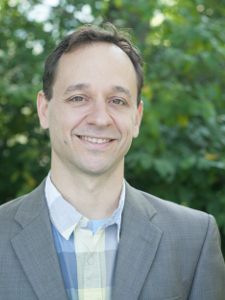
DIET & LIFESTYLE
DISCOVER HOW TO HEAL
Written by John Immel, The biocharacteristic theory of medicine was the dominant medical model for nearly 1,800 years lasting until the 1,600s A.D when it was abruptly abandoned due to advancements in biochemistry. It was adopted in different forms by nearly all silk road cultures from Europe to China. The biocharacteristic theory of medicine offers a rich, but user-friendly system of wellness for physicians & lay people to alleviate disease, improve quality of life, and harmonize their body using natural substances from their environment. The goal of the biocharacteristic theory of medicine is to improve health & wellness by calibrating diet & lifestyle to balancing the biocharacteristics of the client. Here are the main components: Assessment of Dysfunction Using Biocharacteristics
Temper the above imbalances back to the ideal by
How Biocharacteristics Improves HealthThis method restores function by:
Strengths
Treatment HypothesisThe biocharacteristics theory of medicine has value if treating categories of "bodily processes" leads to improved health outcomes when compared with the benefits, costs, and accessibility of other modalities.An example where western medicine uses biocharacteristics theory is the use of steroids to reduce a range of inflammatory or immune system activity. LimitationsSome factors cannot be cured by simply recalibrating a person's biocharacteristics. In these cases, biocharacteristic therapy can be palliative. For example:
List of Fundamental (Simple) BiocharacteristicsHere is a list of most common biocharacteristics recognized across various medical traditions that use this theory:
List of Complex (Derived) BiocharacteristicsBiocharacteristics often have a functional relationship with each other. For example, dryness creates degeneration, heat softens and causes penetration of tissues, oily foods cause heaviness, etc. Because of these functional relationships, simple biocharacteristics frequently appear in predictable combinations, giving the practitioner insight and perspective into pathogenesis of disorders. Practitioners record these combinations and study them. These subtypes are typically classified by biocharacteristics. Here are some examples:
In each particular reflex response, a biochemical vehicle carries out the restorative & buffering action. For example, inflammation markers. The practitioner learns how to treat the phenomenon even when the biochemicals are unknown or complex. The instinct uses these reflexes attempt to regulate health by buffering a stressor on the body (such as the body's response to cold weather). The reflexes also have side effects (Example: Vata hyperactivity, Pitta inflammation, Kapha mucus buildup). These side effects frequently need to be cleared or cleansed from the body as they build up, or else they cause harm (example: byproducts of inflammation). The instinctual response may be excessive, insufficient, or entirely unhelpful in a circumstance (Example: cytokine storm). Thus, to support the body, the practitioner will attempt to guide the instinctual response and temper it. Treatment is accomplished by stimulating or reducing a biocharacteristic (both simple, or complex). Treatment will target the entire set of similar reflexes (the dosha). The treatment will generally stimulate, or downregulate the response (increase or decrease it), or cleanse the side-effects, or may improve the quality of the response. The biocharacteristic theory of medicine groups phenomena strategically for ease of treatment of a range of bodily phenomenon. Recognizing BiocharacteristicsThe presence of a biocharacteristic is known by observable signs and symptoms. For example, a red rash is a sign of heat. Pale or blue skin is a sign of coldness. When a practitioner sees many signs of a biocharacteristic, the practitioner may conclude the biocharacteristic is aggravated systemically.Classifying DiseaseIn a consultation, a practitioner will assess the overall constitution in terms of biocharacteristics. The practitioner will then review various signs and symptoms to determine a primary diagnosis. Having a primary diagnosis, the practitioner further specifies one of several common subtypes - according to the pathogenesis of the disorder. For example, in Ayurveda there are 8 types of fevers. Note how each "type of fever" is expressed as a combination of biocharacteristics.Alongside biocharacteristics, causes are also extensively classified by type so all contributing factors can be addressed. The time of onset or recurrence, place of deposition, presence of exogenous factors, and movement of biocharacteristics are all essential to pinpointing a the appropriate remedies and treatment strategy. These circumstances may even identify a disease subtype. All circumstances of health, disease, and each biocharacteristic is itself analyzed (recursively) to determine its biocharacteristics. A senior practitioner will have memorized the subtypes and circumstances of many different kinds of disorders. Educational LevelsA beginning practitioner learns how to assess the biocharacteristics of the client and restore balance as a health coach. The intermediate practitioner will strive for specific knowledge of each disease subtype. An advanced biocharacteristics doctor also knows how to safely administer the cleansing process.READ MORE ON THIS TOPIC
 My Saved Articles
| Most Popular My Saved Articles
| Most Popular

About the Author John Immel, the founder of Joyful Belly, teaches people how to have a healthy diet and lifestyle with Ayurveda biocharacteristics. His approach to Ayurveda is clinical, yet exudes an ease which many find enjoyable and insightful. John also directs Joyful Belly's School of Ayurveda, offering professional clinical training in Ayurveda for over 15 years.John's interest in Ayurveda and specialization in digestive tract pathology was inspired by a complex digestive disorder acquired from years of international travel, as well as public service work in South Asia. John's commitment to the detailed study of digestive disorders reflects his zeal to get down to the roots of the problem. His hope and belief in the capacity of each & every client to improve their quality of life is nothing short of a personal passion. John's creativity in the kitchen and delight in cooking for others comes from his family oriented upbringing. In addition to his certification in Ayurveda, John holds a bachelor's degree in mathematics from Harvard University. John enjoys sharing Ayurveda within the context of his Catholic roots, and finds Ayurveda gives him an opportunity to participate in the healing mission of the Church. Jesus expressed God's love by feeding and healing the sick. That kindness is the fundamental ministry of Ayurveda as well. Outside of work, John enjoys spending time with his wife and 7 kids, and pursuing his love of theology, philosophy, and language. STUDY AYURVEDA
Questions, Comments & Impressions of 'how does the biocharacteristic theory of medicine work?'?Is there something else you'd like to know about 'how does the biocharacteristic theory of medicine work?'?23 likes      Sign in to review this article Sign in to review this article
|
Join Joyful Belly.
Want our top Ayurvedic recipes and health tips?Subscribe to our free newsletter!




 On MeWe
On MeWe On Pinterest
On Pinterest On Facebook
On Facebook On Twitter
On Twitter On WhatsApp
On WhatsApp On Email
On Email


